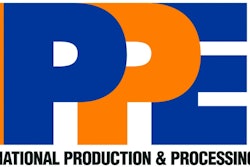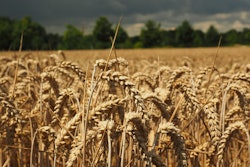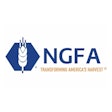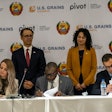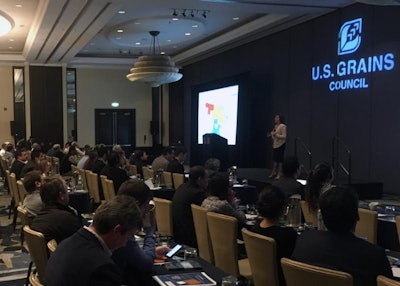
Industry experts and end-users shared technical knowledge and practical experience using U.S. corn, distiller’s dried grains with solubles (DDGS) and sorghum during a Regional Nutrition Conference conducted earlier this month in Peru.
The conference, organized by the U.S. Grains Council (USGC) with support from the U.S. Department of Agriculture’s (USDA) Foreign Agricultural Service (FAS) in Lima, included 126 participants from across the region, including Colombia, Peru, Ecuador, Costa Rica, Chile, the Dominican Republic, Mexico, Venezuela and Honduras.
While Mexico is the top destination for U.S. DDGS and the second largest importer of U.S. sorghum this marketing year, other countries in the region are just starting to understand the benefits of these feed ingredients.
The Regional Nutrition Conference complemented other USGC activities by gathering both current and potential end-users in the same place, increasing knowledge of the benefits of using these ingredients in feed formulations.
“Having both current and future end-users in the same room leverages the Council’s efforts to show positive results,” said Marri Carrow Tejada, USGC regional director for the Western Hemisphere. “User confidence is created when potential end-users from one country see their counterparts in another country already using an ingredient that may be new to them.”
Representatives from across the U.S. industry presented on common questions about DDGS and sorghum and addressed topics including supply and demand, storage and handling of grains in tropical conditions, and the market outlook for DDGS. Breakout sessions focused on specific nutritional information for poultry, swine or dairy/beef diets.
“The general session provided attendees, primarily nutrition staff, with the opportunity to better understand the market fundamentals behind the supply and demand of grains and what to expect regarding future availability of these ingredients,” Tejada said. “The storage and handling presentation specifically addressed one common fear in the region - managing these ingredients properly to avoid affecting their quality.”
The conference also allowed current users to share their own experiences, further reinforcing the Council’s educational efforts. Eight current end-users from across the region spoke during the general session or in breakout sessions about their use of these products.
“Attendees heard directly from their counterparts in the region on their experiences using U.S. DDGS and sorghum,” Tejada said. “Learning candid stories of success, discussing similar problems and working through questions with leading experts brings incredible value to both the end-user and our producers at home.”
Conference attendees are already expressing interest in further collaborating with the Council, including for evaluating DDGS in dairy cattle diets under tropical conditions, importing and distributing DDGS to smaller end-users in Ecuador and Peru and evaluating DDGS corn oil in poultry diets in Colombia.
“There is overnight opportunity for increased DDGS and sorghum sales throughout the region with both current and potential users,” Tejada said. “Educational activities such as this one increase awareness of our U.S. products with key decision makers in the livestock sector - nutritionists. This, in turn, absolutely contributes to increased sales in the region.”
The United States has a natural market advantage in the Central American region given close proximity and trading preferences set out in the Central America and Dominican Republic Free Trade Agreement (CAFTA-DR) as well as individual free trade agreements between the United States and Peru, Panama and Colombia.
USGC activities in the region since the 1980s have helped establish important partnerships and accelerate regional growth of meat, milk and egg production. Ongoing programming including this month’s conference encourages continued momentum for consumption and investment in Central and South America, increasing overall demand for feed and imports from the United States.
Learn more about USGC activities in the Western Hemisphere here.


